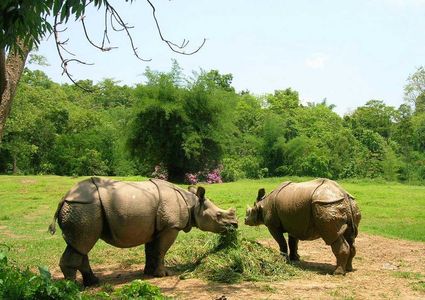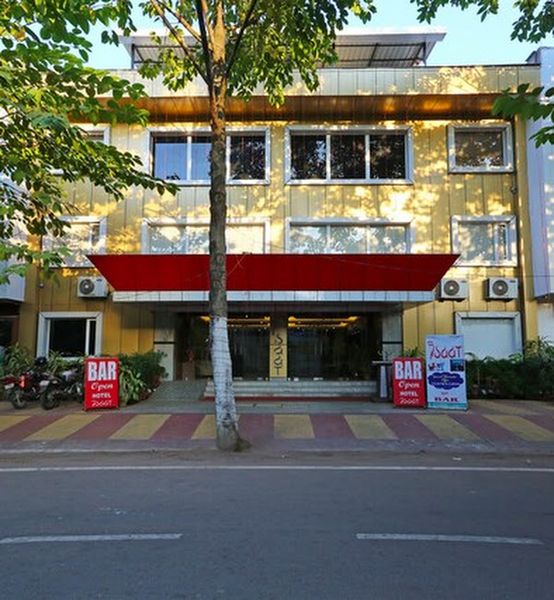Guwahati Zoo: A Sanctuary of Wildlife and Natural Beauty
 Kajal Singh
02 Dec, 2024
11 mins read
1056
Kajal Singh
02 Dec, 2024
11 mins read
1056

Guwahati Zoo (officially known as Assam State Zoo Cum Botanical Garden), is a popular destination for nature lovers, wildlife enthusiasts, and families. Located in the foothills of the Himalayas, this expansive zoo is home to a wide variety of animals, birds, and plant species. Whether you're a local or a tourist visiting Assam, Guwahati Zoo offers an enriching experience, showcasing the region’s rich biodiversity and wildlife conservation efforts.
In this article, we will explore the key features, significance, and attractions of the Guwahati Zoo, along with useful travel tips for visitors.
1. History and Establishment of Guwahati Zoo
The Guwahati Zoo was established in 1957 and was designed to conserve the diverse flora and fauna of Assam. It is one of the oldest and most well-maintained zoos in India. The zoo is spread across a sprawling 432-acre area and is situated in Hengrabari Reserve Forest, which is known for its lush greenery and diverse ecosystems.
Over the years, the zoo has grown into a key center for wildlife conservation and education. The Assam State Zoo Cum Botanical Garden has played an important role in preserving endangered species and educating the public about wildlife protection. Today, it houses over 1,000 animals belonging to various species, including mammals, reptiles, birds, and amphibians. The zoo also promotes environmental awareness and the importance of wildlife conservation.
2. Wildlife at Guwahati Zoo
One of the biggest attractions of Guwahati Zoo is its diverse collection of animals. The zoo is home to a wide variety of species, some of which are native to Assam and other parts of India. Here are some of the notable animals and groups you can expect to see during your visit:
a. Big Cats and Carnivores
The zoo is home to some majestic big cats, such as the Royal Bengal tiger, leopard, and clouded leopard. These creatures are often the highlight of a zoo visit, and the zoo’s large enclosures give them plenty of space to roam. The tiger, in particular, is a symbol of India’s wildlife, and Guwahati Zoo plays an important role in its conservation.
b. Primates
The zoo also features a variety of primates, including Hoolock gibbons (a species found in Assam), rhesus macaques, langurs, and baboons. These animals are fascinating to watch due to their intelligence and playful nature. The Hoolock gibbon, which is found only in the northeastern part of India, is an endangered species, making it one of the key animals the zoo helps protect.
c. Elephants and Deer
The Asiatic elephant, which is listed as endangered, is another highlight of the zoo. These gentle giants are a major attraction for visitors. The zoo also houses various species of deer, such as the Barking deer and Swamp deer, along with other herbivores like wild boars and sambar deer. These animals live in well-maintained enclosures designed to mimic their natural habitats.
d. Reptiles and Amphibians
The reptile section of Guwahati Zoo includes various species such as snakes, crocodiles, and turtles. The zoo also educates visitors about the importance of reptiles in maintaining ecological balance. You can find species like the King Cobra, Python, and Crocodile, among others.
e. Birds
The zoo is home to a wide range of bird species, including local and migratory birds. Some of the notable birds you will find include Peafowl, Hornbills, Cranes, and Parakeets. The bird section of the zoo provides visitors with an opportunity to learn about different species of birds and their roles in nature.
3. Botanical Garden
In addition to the zoo, Guwahati Zoo also includes a Botanical Garden. This garden spans a significant portion of the zoo and contains a variety of plant species, including native trees, medicinal plants, and ornamental plants. Visitors can take a peaceful stroll through the garden, learning about the different plant species that contribute to the biodiversity of Assam. The Botanical Garden also serves as a habitat for several birds and small animals.
Some of the common trees and plants in the garden include Sal trees, Bamboo, Teak, and Mahogany, along with flowering plants like orchids and lotus. The garden is well-maintained and offers a tranquil escape from the hustle and bustle of city life.
4. Conservation Efforts and Education
Guwahati Zoo plays a significant role in wildlife conservation, not only by providing a safe haven for endangered species but also by participating in breeding programs for species like the Bengal tiger and the Hoolock gibbon. The zoo is actively involved in the protection of animals that are facing threats due to habitat loss, poaching, and human-wildlife conflict.
The zoo’s Education and Interpretation Centre offers programs to educate visitors, especially school children, about the importance of wildlife protection and conservation. The zoo conducts educational tours and activities aimed at raising awareness about endangered species and the need to preserve natural habitats.
In addition to its wildlife conservation efforts, Guwahati Zoo also conducts awareness campaigns, organizes wildlife photography exhibitions, and participates in events like World Wildlife Day to engage the public and promote conservation.
5. Facilities at Guwahati Zoo
The zoo is well-equipped with modern facilities to ensure the comfort of both the animals and the visitors. Some of the notable facilities at Guwahati Zoo include:
- Well-maintained enclosures for animals, designed to mimic their natural habitats
- Guided tours to help visitors understand the different species and their conservation needs
- Cleanliness and hygiene maintained throughout the zoo to ensure a pleasant experience for visitors
- Wheelchair accessibility for differently-abled visitors
- Picnic spots for families and tourists to relax and enjoy the natural surroundings
The zoo also has a children’s park, where kids can play and engage in various fun activities. It’s a great place for families to spend quality time together while enjoying the natural beauty of the zoo.
6. Visiting Information and Tips
Guwahati Zoo is open throughout the year, except on certain public holidays. The zoo is typically open from 9:30 AM to 5:30 PM, with the last entry allowed at 5:00 PM. Here are some important tips for your visit:
- Best Time to Visit: The best time to visit is during the winter months (October to March), when the weather is cooler and more comfortable for walking around.
- Entry Fee: The entry fee is quite affordable, and there are discounted rates for children, students, and senior citizens.
- Carry Water: It’s advisable to carry water bottles, as you will likely do a lot of walking. There are refreshment stalls within the zoo, but it’s always a good idea to stay hydrated.
- Comfortable Footwear: Wear comfortable shoes for walking, as the zoo is spread over a large area.
- Cameras: Visitors are allowed to take photographs, but make sure to respect the zoo’s rules and avoid disturbing the animals.
7. How to Reach Guwahati Zoo
Guwahati Zoo is easily accessible from any part of Guwahati. It is located in the Hengrabari area, which is about 7-8 kilometers from the city center. You can reach the zoo by:
- Taxi or Cab: Taxis are available throughout the city and can take you directly to the zoo.
- Auto-Rickshaws: These are another convenient option for traveling within the city.
- Bus: Local buses run regularly and stop near the zoo.
- Personal Vehicle: The zoo has ample parking space if you’re traveling by your own vehicle.
Conclusion
Guwahati Zoo is not just a place to see animals; it is an educational and conservation-driven center where visitors can learn about the importance of protecting wildlife and preserving nature. The zoo is a peaceful retreat amidst the bustling city of Guwahati, offering both locals and tourists the chance to explore the rich biodiversity of Assam. Whether you are visiting to witness the majestic animals, learn about conservation efforts, or enjoy a relaxing day in nature, Guwahati Zoo is a perfect destination for wildlife lovers and families alike.
Written By:
Kajal Singh



Hotels at your convenience
Now choose your stay according to your preference. From finding a place for your dream destination or a mere weekend getaway to business accommodations or brief stay, we have got you covered. Explore hotels as per your mood.


